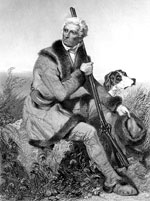Cumberland Gap National Historical Park [KY]
The 20,000-acre Cumberland Gap National Historical Park preserves the site of the original "gateway to the west" used by settlers and pioneers. Native American populations had used this gap to cross the mountains for centuries prior to the arrival of European Americans. However, Daniel Boone (1734-1820) opened the Wilderness Road through Cumberland Gap to these settlers in 1775. Sites of historical note include a historical iron furnace, the 1904 Hensley Settlement, and fortifications dating to the Civil War.
The park offers two introductory films, interactive exhibits, an educational activity area for children, Appalachian craft demonstrations, two-hour cave tours, three-and-a-half- or four-hour settlement tours, Junior Ranger activities, and picnic sites. Please note that if you are interested in the cave tour, the National Park Service requests that you do not wear clothing that you have worn to another cave. This is an effort to avoid spreading White-Nose Syndrome, a condition which has caused the death of countless bats. Even if you personally fear or dislike these creatures, please remember that they are an important part of their (and our) ecosystems.
